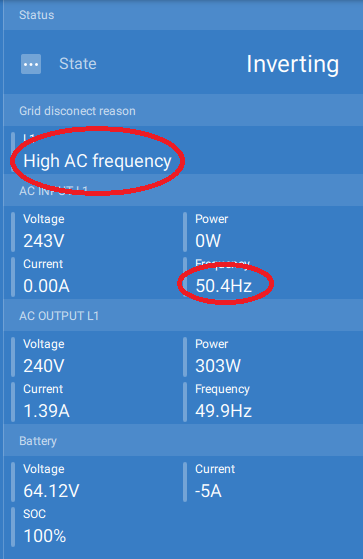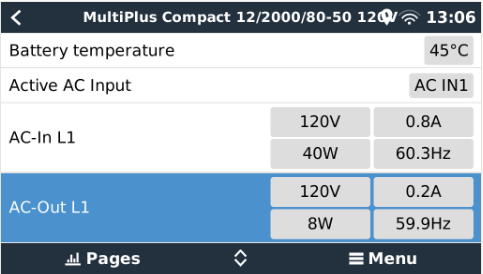Newly installed MultiPlus-II 5000 has been running great for several weeks now except for one nagging problem. I use Node-Red in ESS mode 1 to turn the inverter to Invert Mode at night time, then allow the batteries to charge in the morning. When the batteries are fully charged I switch the inverter back to ON mode to allow feed-in. Sometimes the AC-IN will connect within a matter of seconds, sometimes it takes hours. AC-IN is connected to stable grid-power at 50.4-50.6 Hz. Even at a stable 50.4 HZ for a sustained period of time it will not connect. Without changing anything, if the grid frequency drops to 50.1Hz or 50.2Hz for a minute, it will connect. Otherwise I have waited for up to 8 hours before it will connect.
Accept wide frequency range is enabled. I have tried all of the various other settings: weak AC, UPS Function, Conditional A/C Input Connection is disabled, etc.
I had mentioned this in a previous post, but it was a smaller issue that what I was facing at the time. So I decided to make it it's own post. Thanks.





